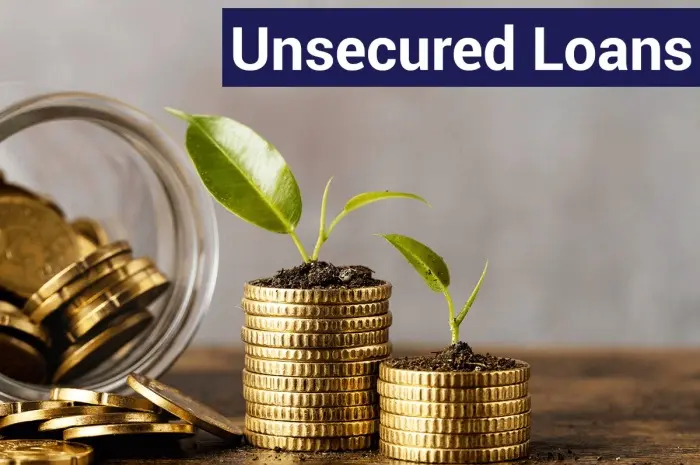Unsecured loans, also known as personal loans, are a versatile financial tool that can provide individuals with access to much-needed funds for various purposes, from debt consolidation and home improvements to emergency expenses and major purchases.
Unlike secured loans that require collateral, such as a house or car, unsecured loans are not backed by any assets, making them accessible to a wide range of borrowers.
However, with this accessibility comes responsibility, as using unsecured loans wisely is crucial to avoid falling into debt and compromising your financial stability.
In this comprehensive guide, we’ll explore how to use unsecured loans wisely, empowering you to make informed decisions and achieve your financial goals without undue risk or hardship.
1. Assess Your Financial Situation
Before applying for an unsecured loan, it’s essential to assess your financial situation and determine whether borrowing is the right option for you. Evaluate your income, expenses, and existing debt obligations to gauge your ability to afford loan repayments.
Consider factors such as your credit score, employment stability, and future financial goals to ensure that taking on additional debt aligns with your overall financial strategy.
If you’re struggling with debt or facing financial challenges, explore alternative options such as budgeting, saving, or seeking financial counseling before committing to a loan.
2. Set Clear Financial Goals
Identify clear financial goals that you hope to achieve with the help of an unsecured loan. Whether you’re consolidating high-interest debt, funding a home renovation project, or covering unexpected medical expenses, having a clear purpose for borrowing can help you stay focused and disciplined in managing your finances.
Define specific goals, timelines, and budgetary constraints to ensure that your borrowing aligns with your overall financial objectives and priorities.
3. Compare Lenders and Loan Options
Take the time to research and compare different lenders and loan options to find the best terms and rates for your needs. Shop around and solicit quotes from multiple lenders to compare interest rates, loan terms, fees, and repayment options.
Consider factors such as the lender’s reputation, customer service, and eligibility requirements when evaluating loan offers. Choose a reputable lender with transparent terms and favorable rates to ensure that you’re getting the best possible deal on your unsecured loan.
4. Borrow Responsibly
When borrowing money through an unsecured loan, it’s essential to borrow only what you need and can afford to repay comfortably.
Avoid the temptation to borrow more than necessary or to use the loan funds for non-essential purposes, as this can lead to unnecessary debt and financial strain.
Be realistic about your borrowing needs and prioritize essential expenses and investments that will provide long-term value and benefit to your financial well-being.
5. Create a Repayment Plan
Develop a comprehensive repayment plan to manage your unsecured loan effectively and ensure timely repayment.
Calculate your monthly loan payments based on the loan amount, interest rate, and term length, and incorporate them into your budget to ensure that you can afford them without sacrificing other essential expenses.
Consider setting up automatic payments or reminders to avoid missing payments and incurring late fees or penalties. Additionally, explore strategies such as accelerated payments or debt snowballing to pay off your loan faster and minimize interest costs over time.
6. Use Funds Wisely
Once you’ve obtained an unsecured loan, use the funds wisely and responsibly to achieve your financial goals.
Avoid unnecessary spending or frivolous purchases, and instead, focus on using the loan funds to address specific needs or opportunities that will improve your financial situation.
Whether you’re consolidating debt, investing in home improvements, or covering emergency expenses, be mindful of your spending and prioritize expenses that provide long-term value and benefit.
7. Monitor Your Credit
Keep a close eye on your credit score and credit report before, during, and after borrowing an unsecured loan.
Regularly monitor your credit report for any errors or discrepancies that may affect your credit score, and take steps to address them promptly.
Make timely loan payments and maintain a low credit utilization ratio to demonstrate responsible credit management and improve your creditworthiness over time.
A strong credit profile will not only increase your chances of qualifying for future loans but also enable you to access better terms and rates.
8. Seek Financial Guidance
If you’re unsure about how to use unsecured loans wisely or if you’re facing financial challenges, don’t hesitate to seek professional financial guidance and advice.
Consult with a certified financial planner, credit counselor, or financial advisor to assess your financial situation, explore options, and develop a personalized financial plan that aligns with your goals and priorities.
A qualified financial professional can provide valuable insights, guidance, and support to help you make informed decisions and achieve financial success.
In conclusion, unsecured loans can be a valuable financial tool for achieving various goals and objectives, but it’s essential to use them wisely and responsibly to avoid falling into debt and compromising your financial stability.
By assessing your financial situation, setting clear goals, comparing lenders and loan options, borrowing responsibly, creating a repayment plan, using funds wisely, monitoring your credit, and seeking financial guidance when needed, you can make informed decisions and leverage unsecured loans to achieve your financial goals effectively.
With diligence, discipline, and prudent financial management, unsecured loans can be a valuable asset in your journey towards financial freedom and prosperity.






